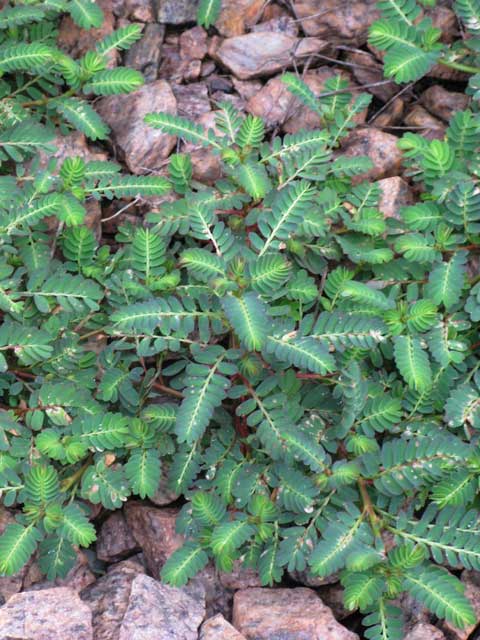
Habit [Top]
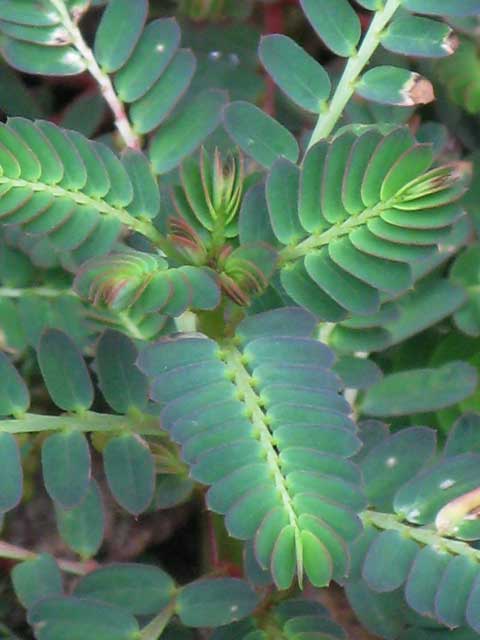
Habit [Top]
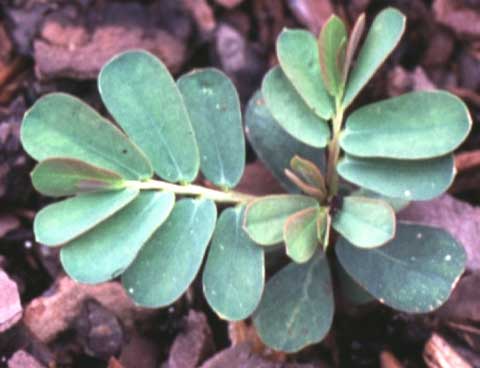
Seedling [Top]
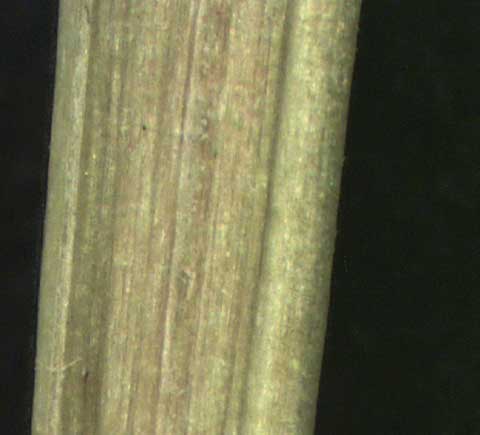
Stem [Top]
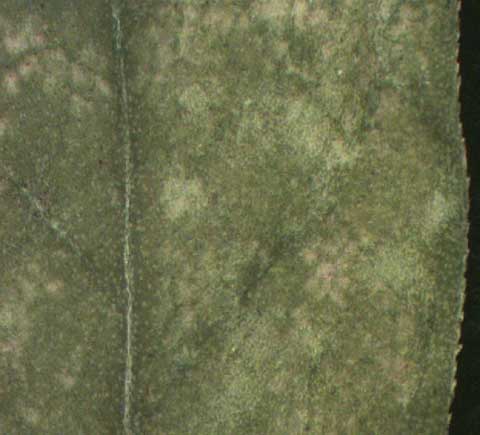
Abaxial leaf surface [Top]
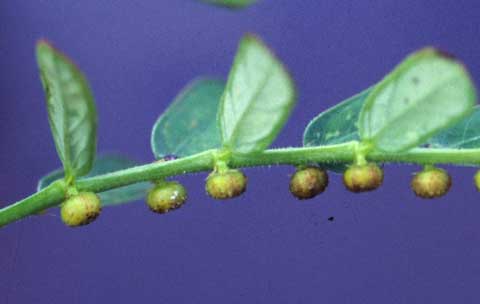
Infructescence [Top]
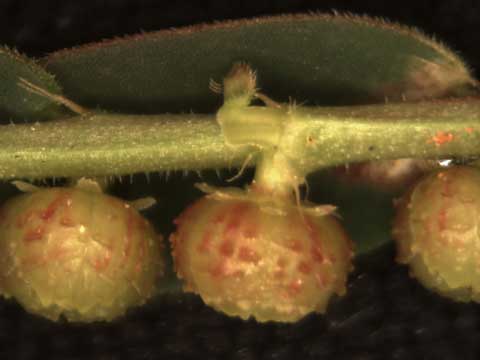
Fruit [Top]
Herbicide Effectiveness [top]
Key to Rankings
Barricade/Regalkade
P-F
Broadstar
G
Gallery
P
OH2
G
Pennant Magnum
P
Pendulum
F
Regal OO
G
Ronstar
F
Rout
G
Showcase
F
Snapshot TG
P-F
Surflan
F
Treflan
P
Description [top]
Chamberbitter (Euphorbiaceae) is a summer annual, heavily branched at the base with ascending stems, often forming a mound 1 to 2 feet in height. Leaves are oblong in shape, ¼ to ½ inch in length, on short branches, and look similar to compound leaves of some legumes. Although in the spurge family, chamberbitter stems do not exude milky sap when broken. Flowers are small, inconspicuous, and greenish-white. Distinctive round fruit are borne on the undersides of the lateral branches at the leaf axils. Similar in appearance to longstalked phyllanthus, the two species differ by the length of the seedpod stalks. Chamberbitter fruit are borne sessile (without stalks) whereas longstalked phyllanthus stalks are about ¼ to ½ inch long. Phyllanthus require substrate temperatures above 75 oF to germinate and thus are more common in the summer, but will persist into late fall in the southeastern US (and year-round in sub-tropical areas). Plants flower throughout the summer and fall then die after frost. Fruit forcefully expel seed short distances. Both species of phyllanthus are particularly difficult to control. Do not let plants go to seed in the nursery. Inspect liners before potting and eradicate new infestations before they can spread. They are poorly controlled by most preemergence herbicides labeled for use in container nursery crops. [TOP]